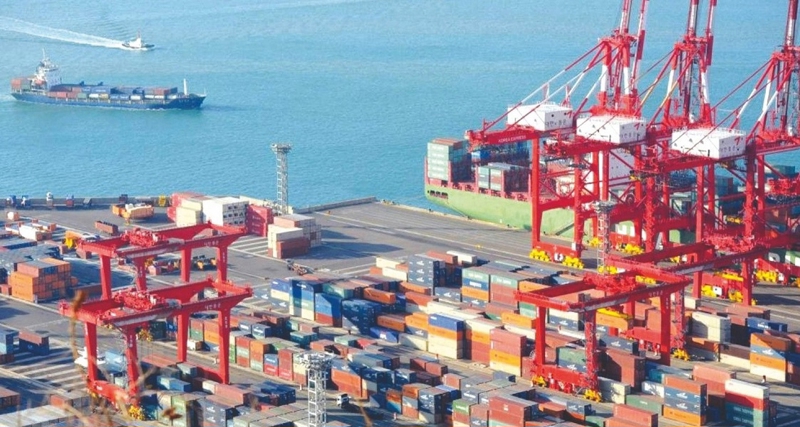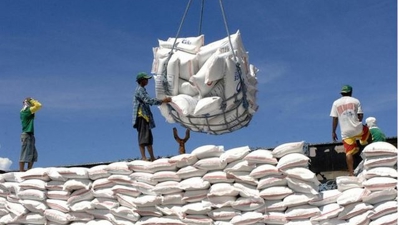Import - export activities on the rebound, trade surplus exceeds $10 billion
After a slight dip of 3.2 per cent in the previous month, Vietnam's import-export turnover in July surged by 8 per cent, bringing the total trade turnover in the first 7 months to $514.7 billion

Vietnam’s total import-export turnover in July reached $82.27 billion, up 8 per cent from the previous month and 16.8 per cent compared to the same period last year, according to data released by the Statistics Office (under the Ministry of Finance) on August 6.
The figure brings the total import-export turnover in the first seven months of 2025 to $514.7 billion, up 16.3 per cent year-on-year. Of this, export value increased by 14.8 per cent, while import by 17.9 per cent.
In July alone, export turnover was estimated at $42.27 billion, a 6.9 per cent increase from the previous month, with the domestic sector contributing $8.95 billion (up 3.5 per cent), while the foreign-invested sector (including crude oil) recording $33.32 billion (up 7.9 per cent).
July export value grew by 16 per cent year-on-year, driven entirely by the foreign-invested sector, with a 25.9 per cent increase, while the domestic sector fell 10.3 per cent.
Over the first seven months of 2025, total export turnover hit $262.44 billion, a 14.8 per cent increase year-on-year, with the domestic sector accounting for $67.48 billion (up 6.7 per cent year on year), equivalent to 25.7 per cent of the country's total export value, while the foreign-invested sector contributed $194.96 billion (up 17.9 per cent), or 74.3 per cent of the total.
There were 28 export items with turnover exceeding $1 billion each, making up 91.7 per cent of the total export value. Among them, 9 products surpassed the $5 billion mark, accounting for 72.3 per cent.
In terms of export structure, processed industrial goods brought in $232.37 billion, or 88.6 per cent of the total export value. Agricultural and forestry products reached $22.4 billion (8.5 per cent), seafood totaled $6.08 billion (2.3 per cent), and fuel and mineral products made up $1.59 billion (0.6 per cent).
On the import side, Vietnam’s import value in July was estimated at $40.0 billion, up 9.1 per cent from June. The domestic sector accounted for $11.29 billion (up 4.6 per cent), and the foreign-invested sector for $28.71 billion (up 11.0 per cent).
Compared to July 2024, import value recorded in July this year rose by 17.8 per cent. While import value from the domestic sector dropped 5 per cent, that of the foreign-invested sector surged 30 per cent.
For the seven-month period, total import value stood at $252.26 billion, up 17.9 per cent year-on-year, including $84.07 billion (up 8 per cent) from the domestic sector and $168.19 billion (up 23.6 per cent) from the foreign-invested sector.
There were 36 imported products with values exceeding $1 billion each, making up 90.5 per cent of the total import value. Among them, 9 items recorded $5 billion each, accounting for 64.1 per cent.
In terms of import structure, production materials dominated, totaling $236.57 billion, or 93.8 per cent of the total. This included machinery, equipment, tools and spare parts (51.7 per cent) and raw materials, fuel, and inputs (42.1 per cent). Meanwhile, consumer goods stood at $15.69 billion, making up 6.2 per cent.
Regarding trade partners, the United States remained Vietnam’s largest export market in the first seven months, with export turnover reaching $85.1 billion. China was the top source of imports, with Vietnam importing $101.5 billion worth of goods.
As a result, Vietnam recorded a trade surplus of $74.6 billion with the U.S., up 28.6 per cent year-on-year; $22.3 billion with the EU (up 9.9 per cent); and $1.3 billion with Japan (up 21 per cent).
However, Vietnam ran a trade deficit of $66.5 billion with China (up 41.1 per cent), $17.4 billion with South Korea (down 0.2 per cent), and $8.5 billion with ASEAN (up 63 per cent).
Totally, in terms of trade balance, Vietnam recorded a preliminary trade surplus of $2.27 billion in July, bringing the cumulative trade surplus for the first seven months of the year to $10.18 billion—lower than the $14.63 billion surplus recorded in the same period of 2024.







